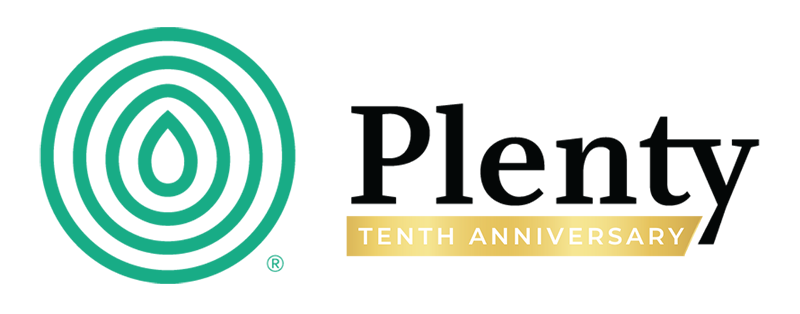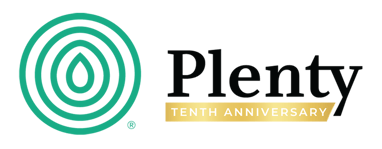Lead Through Uncertainty: Your Nonprofit Can Adapt Amid Funding Cuts
Two weeks ago, I got a text from a longtime colleague and friend. My face lit up when I saw the incoming text, then frowned when I read the note:
“Jeff, we need help. I think upcoming cuts in funding will impact us.”
I responded immediately. “How soon?”
“Not sure,” she wrote.
Ouch. “How much?” I asked.
I waited.
I saw the dots in the text thread start and stop. She was trying to get herself to say it.
Then it came: “Almost all of it.”
This isn’t just any organization—it is a well-known group that has been making a real difference in their issue area for years, with strong leadership, a dedicated team, and a clear mission. But overnight, everything they had built was at risk. And they aren’t alone.
These are interesting times to be a nonprofit leader.
Across the sector, nonprofits face financial uncertainty as funding cuts ripple through their budgets. Whether you think these cuts are a much-needed restructuring of decades of reckless federal overspending or an irresponsible and indiscriminate scattershot action is beside the point when you’re on the ground. For many organizations, it’s a moment of reckoning—making harsh choices about what’s essential, what staff are vitally needed, and, in some cases, what programs will survive.
We certainly feel it in the conversations we're having with clients, which seem to quickly turn from increasing impact and setting long-term strategies to donor acquisition, raising money quickly, and, to be blunt, how they need more funding – fast.
Is there a path forward? Is there a way to emerge stronger, more resilient, and more connected to your donors than ever?
It might be hard to see, but there’s an opportunity somewhere here to rethink how you connect with donors, share your story, and sustain your mission.
The Weakness Underneath the Latest Crisis
If your nonprofit relies on federal grants, matching funds, or other public sector support, you are likely feeling the squeeze. And if your nonprofit doesn’t rely directly on federal grants, you may have learned in the last two weeks that your budget depends indirectly on federal funds in ways you didn’t realize.
Budget reductions at the federal level trickle down, impacting everything from service delivery to staffing.
The nonprofit leaders we’re working with are feeling:
- Uncertainty about how to fill funding gaps
- Pressure to do more with less
- Frustration over messaging that no longer resonates in a cluttered atmosphere
- Concern about donor fatigue in an increasingly competitive environment
- Regret for not being more diversified than they are
That last bullet point to a harsh lesson many organizations are learning again this month: there's an inherent weakness in being overreliant on one source of funds. I realize it’s little comfort to identify that after the fact. But if you’ve found yourself saying, “I can’t believe 70% of our funding is at risk,” now is the time to lay the groundwork for something more sustainable in the future.
Time to Get Out of the Bunker
One benefit of being of “a certain age” is that I have lived through several similar crises. The IPO meltdown of late 1999. The financial implosion of 2008. The pandemic of 2020. All were significant disruptions to the nonprofit space.
I’ll admit that having a few crises under my belt doesn’t necessarily make the next one easier. But it does help reinforce a belief I’ve been writing about for years: The normal state of things is not growth. It is decline.
Your nonprofit does not automatically grow and certainly doesn’t sustain itself indefinitely. If anything, the natural state of a fundraising program is decay. With the best donor retention rates around 50%, most organizations need to replenish at least half of their donors yearly to stay even. Making no changes to your fundraising program—or worse, pulling funds and staff from it—will only accelerate deterioration.
Growth does not come from riding a wave; it comes from hustle, ongoing investment, and constant innovation. This is a critical moment, not just to react but to rebuild. There will be time to discuss, analyze, and reassess later. But right now, it’s time to get out from behind the desk. Taking a “wait and see” approach to funding challenges is a massive risk. The risk isn’t in overspending your precious and dwindling resources. The real risk is not investing, not adapting, and not seeking new revenue streams right now while you still have the runway to do so.
If you’ve been hunkering down, it’s time to get out of the bunker. The most responsible strategy is investment. This moment of uncertainty is an opportunity to flex and rebuild the organizational muscles your nonprofit needs to ensure long-term sustainability. (I invite you to listen to my recent appearance on the We Are For Good Podcast here for a longer exposition – and hopefully some motivation – on this subject. Quick summary: Your positive energy matters. We need you!)
How to Pivot Your Fundraising Strategy
The good news?
Your donors still care deeply about your work.
It’s true. Your donors, partners, and key supporters haven’t left you. Some will be more motivated than ever to help you create a better, more stable future state.
But your appeals need to shift from reactive to proactive to keep them engaged. Instead of centering on scarcity (“We are at risk of closing”), successful organizations pivot their messaging to impact (“Your support makes this vital work possible”). The messages of scarcity, which are never really effective for building long-term advocates, are doubly ineffective right now when so many similar messages are flooding the space.
Here are three critical ways to refine your approach:
1. Reframe Your Ask – The most effective fundraising appeals are anchored in impact, not fear. Instead of focusing on loss, focus on opportunity.
- Before: “If we don’t raise $100,000, we will have to cut services.”
- After: “With your help, we can continue serving 500 families this year.”
2. Use Data to Drive Decisions – Donor insights are more valuable than ever. Look at your giving trends, donor retention rates, and engagement levels to segment your outreach. Personalized appeals have significantly higher response rates than generic, one-size-fits-all asks. Who are your most loyal supporters? What programs are they most interested in? Tailor your asks and your communications. The extra work is more than worth it for the increase in results.
There are opportunities in your data. This is not the time to avoid Excel or gloss over your dashboards. This is the time to roll up your sleeves, channel your inner numbers person, and focus your curiosity. (If you need a wingman, we can help.) A few hours of thought-out inquiry can lead to major opportunities.
One quick example from a communication we crafted last week: A first, more generic email was sent to a list of 14,000 people. The open rate on that message was terrible – about 2%. We recrafted that original message to a smaller, more focused, engaged list of 3,600 people. The open rate? 37.5%. In raw numbers, nearly six times as many recipients opened the second message, even though we sent it to one-quarter of the people.
Notice that I say “opened” and not “gave.” I know your need is pressing –but resist the urge to make every communication a solicitation. Ensure people are reading, engaging, listening, and supporting before you ask. Not always easy to do, but it will pay off over time.
3. Leverage the Opportunity for Deeper Engagement – Now is the time to deepen donor relationships. Keep communication open, transparent, and mission-driven. Don’t assume that your supporters understand what you do or the positive impact you make. Use this to highlight the good work you have probably already documented in your annual report. Show them your dedication to your community. Share the tangible impact of donations and how supporters can be part of the solution. Find your idealism and share it.
Prioritizing Donor Cultivation Over Acquisition
To the last point, in challenging financial times, it’s natural to consider broadening your donor base to offset funding cuts. However, as I wrote in my previous post, “What’s Wrong at the Top of Your Donor Funnel,” focusing excessively on acquisition can lead to diminishing returns. Mass outreach efforts often yield low response rates, and the cost of acquiring new donors can escalate quickly.
Instead, invest in the donors already connected to your mission. These individuals have demonstrated interest and commitment, making them more likely to increase their support when engaged thoughtfully. By deepening these relationships, you enhance immediate fundraising outcomes and build a loyal donor base that sustains your organization through future uncertainties.
This kind of engagement requires phone calls, sit-downs, and visits over coffee more than it means mailings and emails. It means a shift from transactional interactions to genuine engagement, where donors feel valued and integral to your mission’s success. It’s about quality over quantity—fostering meaningful connections that inspire continued and increased support.
Finding Love in the Work—Even When You Don’t Like It
We’ve been writing about love all month long, and I know that message feels tone-deaf to some of you right now. It’s easy to love your mission when things are going well. But what about when the funding dries up? When donor engagement feels harder than ever? When the stress of financial uncertainty threatens to overshadow the passion that got you here in the first place?
Sustainable impact is built on a deep, enduring love for the work—not just in the good times but in the challenging ones, too. Love for the people you serve. Love for the vision you hold. Love for the difference you make, even when the path forward isn’t clear.
Like any deep relationship, your connection to your mission will have highs and lows. In times of uncertainty, going back to the basics might help. What first called you to this work? What impact do you dream of making? What keeps you going even when the external support fluctuates?
Loving your work doesn’t mean always liking it. It means choosing to stay engaged, find joy in small wins, and trust that every challenge is an opportunity for growth.
If You Need Help
I hope something in this post is inspiring, helpful, and additive to you. It’s a time of disruption, and my intention isn’t to lecture – it’s to help you steady the ship.
At Plenty, we’ve been fortunate enough to help organizations turn moments of crisis into moments of transformation. We’ve worked over the last several weeks to recraft some of our most direct and impactful services into a rapid-response solution: the Myriad One-Day Rapid Response Intensive — a streamlined approach to recalibrating your appeals, messaging, and donor engagement to maximize support in uncertain times.
We designed the Myriad One-Day to give you and your team the clarity, strategy, and momentum needed to weather this storm. It’s not how we usually work – we like the long form and time to ideate and align. But we know many of you don’t have that time right now.
You can expect:
- Messaging Realignment – Craft compelling, donor-centric appeals that emphasize impact and urgency.
- Fundraising Insights – Assess current giving trends and tailor your outreach accordingly.
- Appeal Strategy & Campaign Support – Develop a clear, actionable fundraising plan you can implement immediately.
We’ve put it all into a rapid, one-day session designed to get you moving – not get it all perfect, but get you moving forward if you feel stuck in place. And we’ve tipped over our usual pricing to make it affordable to organizations of all sizes.
Schedule a Free 30-Minute Consultation – Let’s discuss your organization’s unique challenges and explore how a Myriad session can help. Reach out to us here.
Keep Going
None of this is easy, but it’s work worth doing. And you’re worth doing it with as much calm and peace as possible.
You’ve got this, right? If we can help, please let us know.
Read the Follow-Up Post
As this post has been read and shared in the space, I’ve gotten quite a few questions about the specifics: What should I do next? How, specifically, do I explore my data?
We recently published a follow-up post to answer those questions and plant some seeds to provide more direction on where you can start.
It's called "After the Cuts: How to Find New Revenue For Your Nonprofit." You can read it here.
Read Part 2: Finding New Revenue
Based on the questions we've received from this post, we've written a follow-up with very specific approaches to use to find new revenue. Read More >
Find Clarity, Drive Quick Results
If you're feeling the pressure of making quick strategic decisions without clear data-driven insights, Myriad can help.
Whether you need a quick but comprehensive strategic assessment or a rapid-response intensive, Myriad offers clarity, guidance, and actionable plans to help you sift through uncertainty and move forward with confidence.
Share this
You May Also Like
These Related Stories

After the Cuts: How to Find New Revenue for Your Nonprofit

What's Wrong at the Top of Your Donor Funnel?



No Comments Yet
Let us know what you think